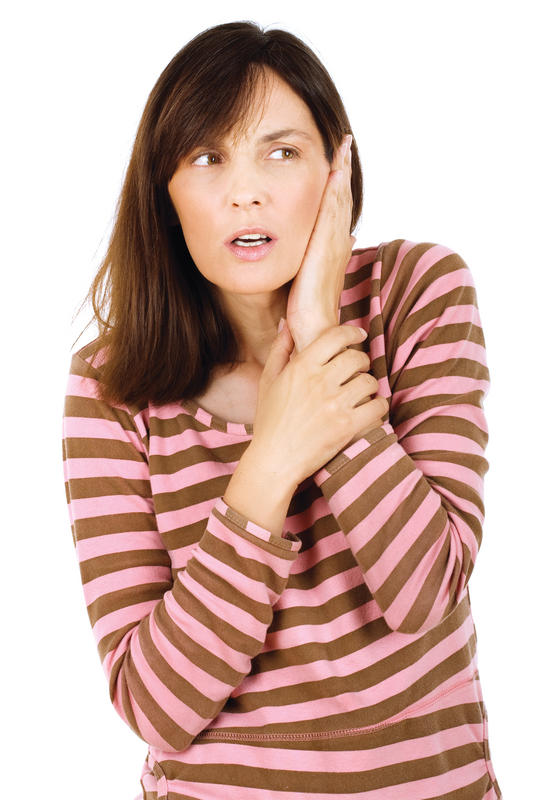Have you ever stood up and had a whooshing sound in ear(s)? A sound that muffles out all of the surrounding noises? If you have, then you’ll likely be curious as to what could be the cause of it and if there is anything you could do. This medical condition is called tinnitus, and its symptoms and treatment methods are introduced in this article.
What Causes Whooshing Sound in Ear(s)?
Millions of people are affected at some point in their lives by a ringing, roaring, hissing, or whooshing sound in one or both ears. Known as tinnitus, it is one of the most elusive and annoying conditions a person have to deal with. An auditory perception that is produced internally, the sound may be constant, intermittent, or pulsating. Tones may range from high to low pitch, can be a single or multi-tone, or just a noise with no tonal quality, and may begin suddenly or come on gradually. For some people, tinnitus may be associated with depression, sleep disturbance, anxiety, medications, and may interfere with concentration.
Different Types of Tinnitus

Subjective Tinnitus
95% of all cases of tinnitus are subjective tinnitus. Associated with nearly every known ear disorder, it is reported in over 80% of people who have sensorineural hearing loss caused by hair cell and/or nerve damage.
It is called subjective tinnitus because, like pain, it affects each individual in different ways, even though the whooshing sound in ear(s) may have the same pitch and volume. The way an individual reacts to the tinnitus determines its severity. Sufferers of this type of tinnitus share something in common nevertheless, including:
• Feelings of anxiety and depression
• Issues at home or at work that contribute to the distress
• Difficulty sleeping or concentrating
• Stress exacerbates the condition
Objective Tinnitus
Less than 5% of tinnitus sufferers fall into the category of objective tinnitus. Often associated with vascular or muscular disorders, objective tinnitus is actually audible to an observer using a stethoscope, or simply by listening in close proximity to the affected ear. It is often described as pulsing in sync with the patient’s heartbeat. Often, the cause of objective tinnitus can be treated, either medically or surgically.
What Should I Do?
If you are bothered by this whooshing sound in your ear(s), see your doctor. If a cause can be determined, it may be able to be treated. If there is no medical treatment available, see an audiologist who specializes in the treatment of tinnitus.
An audiologist will assess your hearing and discuss possible non-medical treatment options. Educating yourself on the nature of tinnitus is very useful in relieving your anxiety and learning of ways to cope with the condition.
Treatment for Tinnitus
Psychological
Cognitive behavioral therapy (CBT), is a well-supported treatment for tinnitus. With the help of a trained counselor, it can decrease the amount of stress that tinnitus sufferers feel. Noise suppression devices such as white noise machines or masking devices, along with relaxation techniques, may also be helpful.
Physical
Earwax buildupcauses temporary hearing loss and aggravates the focus of tinnitus, but your doctor can remedy this problem with a simple cleaning of your ears. If you have chronic earwax buildup, your doctor may be able to offer a solution to that, also.
The “Finger Drumming” technique may help certain people and offer immediate relief, or partial relief over the span of a few days. Basically, the individual places his or her palms over their ears so that the middle fingers touch high behind the head. Then place the index finger over the middle finger. Next, snap the index fingers down gently on the base of the skull 40 times. However, this won’t work for everyone, and often is not a permanent solution for whooshing sound in ear(s).
Medications
There is no known curative drug or medication for tinnitus, but a couple of meds have been known to help some tinnitus sufferers.
- Amitriptyline, an old antidepressant, has had notable effects on some patients who were using it for depression. Believed to work by decreasing the neurotransmitters from the inner ear. The side effects from this medication include dry mouth, constipation, blurred vision, sleepiness, and heart problems.
- Xanax is another medication sometimes used to decrease anxiety. Basically, the tinnitus is still there, but you just don’t care as much. In severe cases, it’s quite helpful, but does cause drowsiness and nausea.
Other Remedies
Oftentimes a person can drown out the whooshing sound in ears using other sounds, such as the radio, TV, or a fan. There are special devices made for this, such as a sleep machine that has a volume control and several sounds from which you can choose—ocean waves, a train, the wind, or a flowing stream. This is especially helpful at night when you’re trying to go to sleep.
People with significant hearing loss can choose from a variety of hearing aids that have a tinnitus therapy feature. They combine hearing aid microphones with an independent sound generator. Your hearing aid professional can help select the right one for you.
Biofeedback counseling uses a technique of making involuntary or unconscious bodily processes detectable by the senses so you are able to manipulate them using conscious mental control. Biofeedback counseling can aid in relieving stress patterns that exacerbate tinnitus.
Prevention of Tinnitus
Prolonged noise exposure that damages the hearing can lead to tinnitus. Sound levels as low as 70 dB can damage your hearing. If you are frequently exposed to loud noises, wear ear plugs to prevent ear damage.
Avoid potentially ototoxic medications. Tinnitus can temporarily result from anti-inflammatories such as ibuprofen, aspirin, quinine, sedatives, certain antibiotics and chemotherapeutic agents. If you must take ototoxic medications, ask your doctor for details such as dose and dosage intervals, in order to reduce possible hearing damage.
